The Search for a WondLaful Cover (IV)
September 20, 2013
The final stages of creating the artwork for The Battle for WondLa dust-jacket required me to set down my pencils, pens and paper and grab a mouse, Wacom stylus and keyboard.
As proud as I am of my inking capabilities, I never create the perfect ink drawing. Cleanup is required. Nowadays I correct errors in Photoshop, but way-back-when I would “white-out” the part I wanted to fix in white acrylic paint, then redraw over it. You can see this technique here in a piece from The Spiderwick Chronicles. Look closely at Byron’s wings.
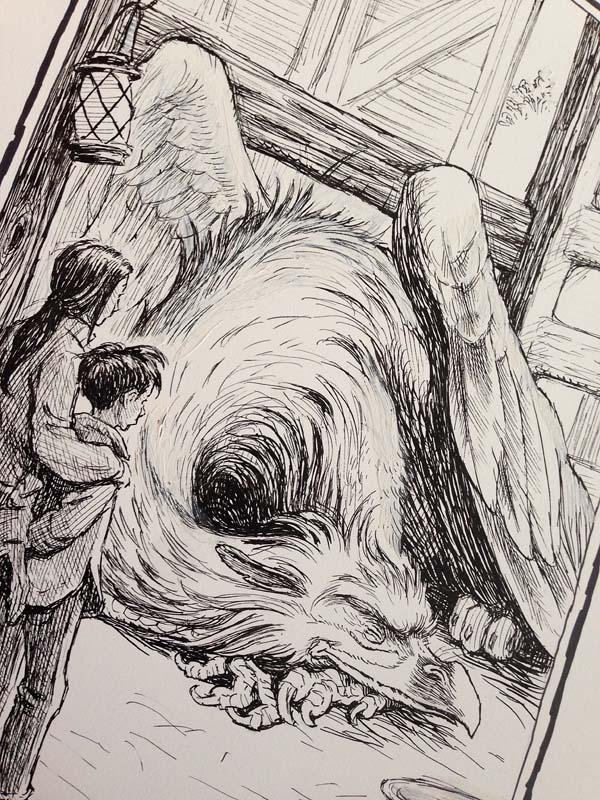
Because India ink is so vibrant, it requires A LOT of white paint in order to mask the error and provide a decent background to re-ink upon. In the end, you are drawing on a bumpy surface of blobbed on paint. I am heartened when I learn that even the most accomplished ink-masters dealt with whiting out mistakes. Here’s a close-up of an original Garth Williams drawing from Charlotte’s Web.

The yellowing of the paper has made his corrections more apparent. Charles Dana Gibson would meticulously patch in a new piece of board to fix his inking mishaps. Once the piece is photographed for reproduction the white-out (or the seams from the patch) would vanish and give the appearance of a perfect ink drawing in the final reproduction. With a home art studio housing new(ish) technology, I now scan my ink drawings and upload them directly into the art director’s ftp folder. This allows for digital cleanup and fixes with incredible freedom.
My first exercise that I run it through is the mirror flip. A common practice in art school, it simply requires looking at a reflection of your artwork. With the image in reverse, errors become more apparent. Let me show you:
This is a scan of the finished ink drawing from Chapter 6 of The Wyrm King from Beyond The Spiderwick Chronicles. Can you see error in the drawing? I couldn’t while I was working on it, so I’ll give you a clue: It has to do with Nick, the boy in the lower left wearing the seaweed cap.
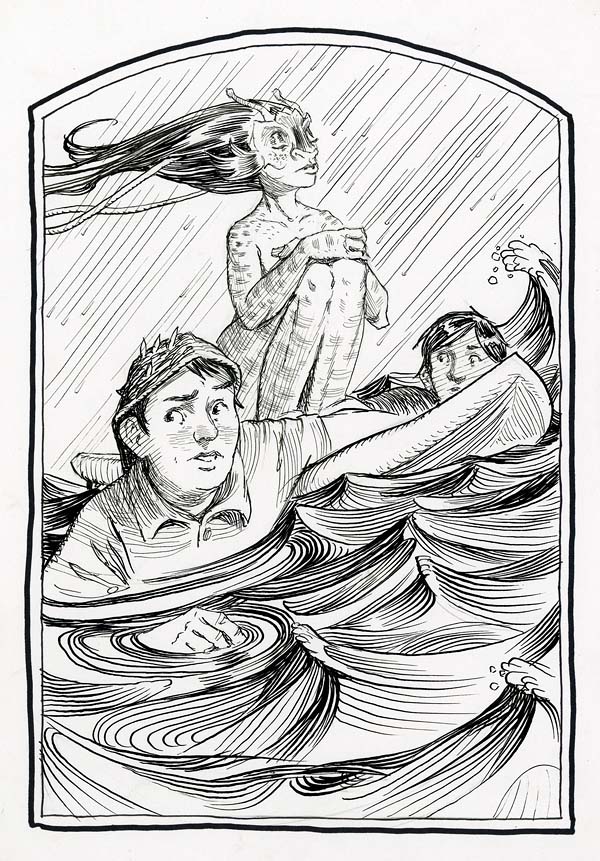
Here is a close-up of Nick scanned for print (a 600 dots per inch [dpi] bitmap).
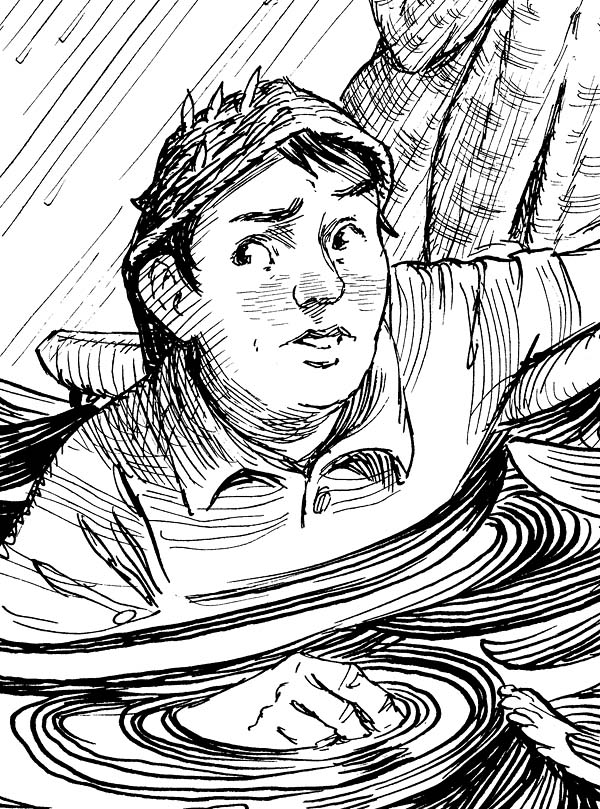
Now I shall mirror-flip it in Photoshop. The error becomes more apparent in this reversed image – the axis of his eyes are off (among other facial features). A quick digital fix will show how subtle tweaks to line art can make a big difference.
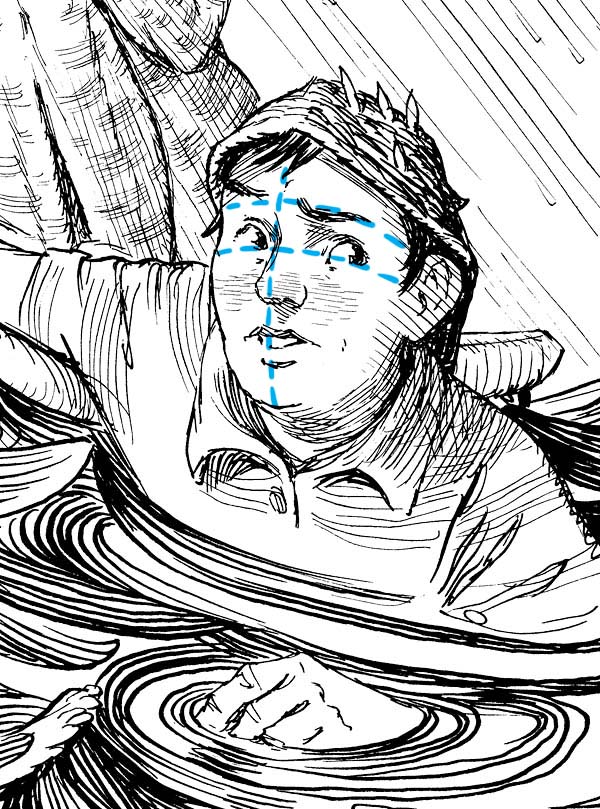
In Photoshop, not only can I erase dust, ink droplets and spatter, I can also alter the drawing itself. Here I am nudging the eye back up a bit and rotating it slightly.
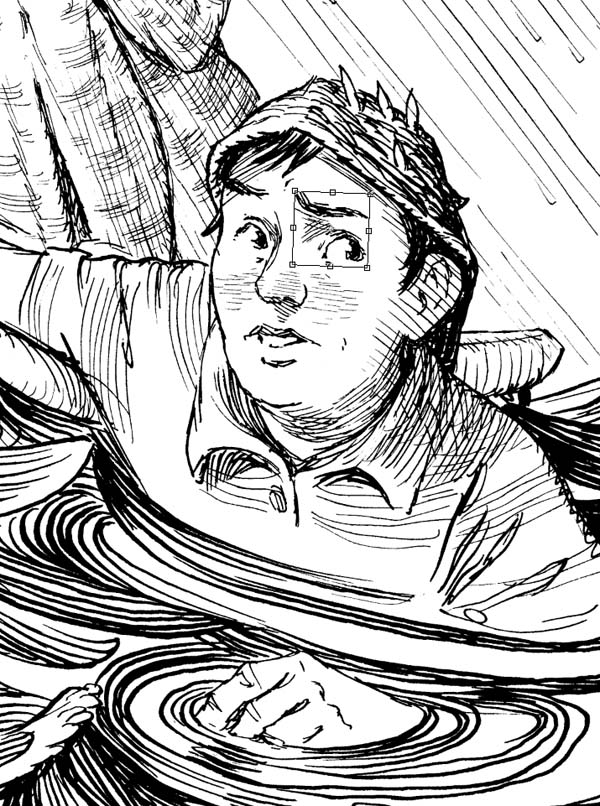
I can also erase any inconsistencies in the line work and redraw whatever needs to be done. Compare the original artwork (left) with the cleaned-up version (right). (Click to see a hi-res image)
 And here is the final printed image.
And here is the final printed image.
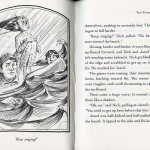
Of course, this begs the question: Why not just ink the whole thing digitally? Because I like to have a physical piece of art when all is said and done. I want something that’s been held and made by human hands. And, despite these tweaks and cleanup, I want some of the ink blobs, smudges and errors created when by drawing by hand. That is part of the charm for me.
That in mind, I tend to err on the conservative end when cleaning up my ink drawings digitally. More often than not, the original drawing looks pretty close to the final printed image.

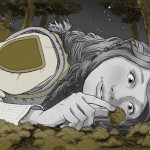
And here is the inked artwork of Eva for the cover to The Battle for WondLa. I got lucky on this one and it required little clean up (I fixed the pattern on the muzzle of the boomrod, removed strands of hair, and erased lines where her hand gripped the Omnipod). Now she is ready for color, but more on that next time…
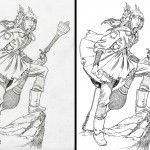
Back to main news page

 Menu
Menu Connect
Connect
















